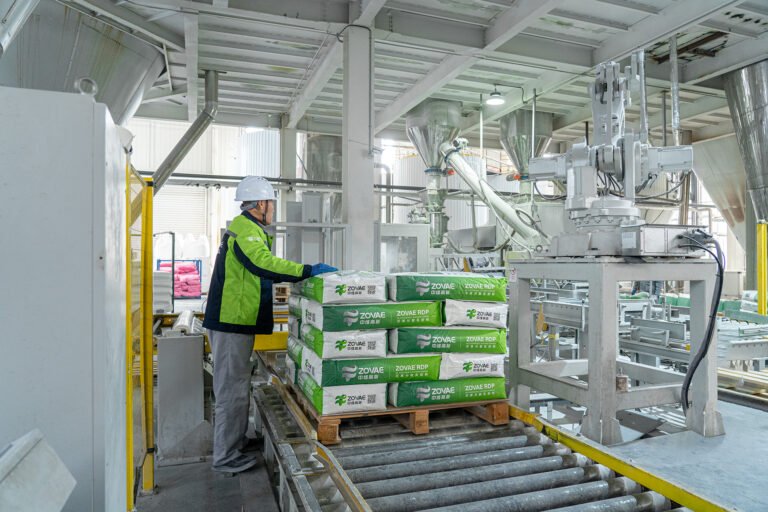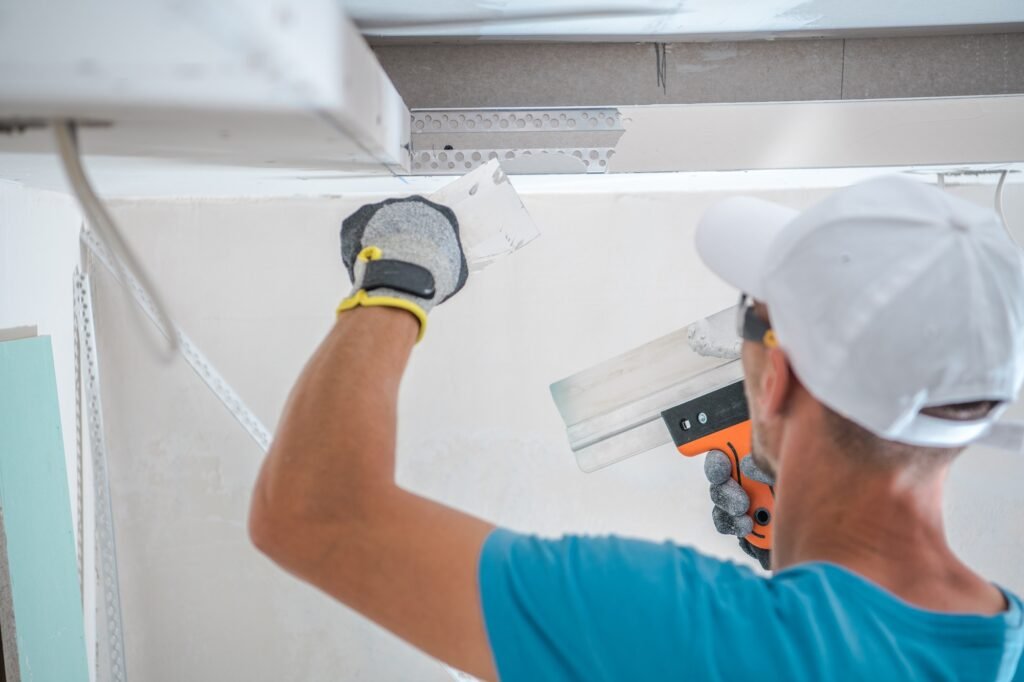Executive Summary
Gypsum products must navigate a critical equilibrium: setting rapidly enough to drive productivity while allowing sufficient time for precise placement, intricate detailing, and flawless finishing. Zovae Gypsum Retarder is meticulously engineered to calibrate this balance by tempering the hemihydrate-to-dihydrate hydration reaction. Through precise regulation of nucleation and crystal growth, it extends open time, mitigates environmental variability, enhances surface quality, and curbs cracking and deformation—without compromising ultimate strength or durability. This comprehensive, full-length article elucidates how gypsum retarders function, underscores the significance of their four core functions in real-world applications, and provides a roadmap to transform these benefits into consistent, repeatable outcomes. Within, you’ll uncover detailed mechanism insights, formulation and dosing playbooks, climate and logistics strategies, compatibility considerations, quality-control protocols, troubleshooting frameworks, sustainability and cost-in-use analyses, illustrative case snapshots, and a step-by-step implementation guide.
Introduction: Why Timing Drives Gypsum Performance
In contrast to cement, gypsum sets at an accelerated pace, rendering it ideal for swift interior construction, casting, and decorative endeavors. Yet, this inherent rapidity can pose challenges when crews confront expansive areas, intricate mold configurations, fluctuating weather conditions, or substrates that siphon moisture. A premium gypsum retarder, such as Zovae, offers a controlled setting profile, transforming restrictive timeframes into manageable workflows. The outcome is heightened productivity, reduced defects, polished finishes, and predictable performance across batches and seasons. How can a single additive redefine gypsum application? By mastering timing, Zovae empowers professionals to optimize every stage of the process, ensuring excellence from mixing to final cure.
Gypsum Hydration in Brief: From Hemihydrate to Dihydrate
- The Binder: Most construction plasters derive from calcium sulfate hemihydrate (CaSO₄·½H₂O), obtained by calcining natural gypsum rock (CaSO₄·2H₂O). Alpha (α) hemihydrate boasts a denser structure with controlled reactivity, while beta (β) hemihydrate is more porous, often necessitating higher water content for equivalent workability.
- The Reaction: Upon mixing with water, hemihydrate dissolves, creating a solution supersaturated with respect to gypsum dihydrate (CaSO₄·2H₂O). Dihydrate crystals then nucleate and grow, forming an interlocking network. Initial set indicates the onset of rigidity, while final set signifies the consolidation of this crystalline framework.
- The Levers: The pace of transition from fluid to solid is governed by nucleation rate, crystal growth rate, and solution supersaturation. Factors such as temperature, impurities, particle size, and additives (retarders, accelerators, plasticizers, thickeners) modulate these critical levers, shaping set behavior.
How a Retarder Works: Targeted, Reversible Control
- Nucleation Moderation: Retarder molecules adsorb onto emerging dihydrate nuclei or complex free Ca²⁺ ions, elevating the energy barrier for new crystal formation. This results in fewer nuclei forming early, thus prolonging the time to initial set and easing workflow pressures.
- Growth Face Blocking: Specific functional groups within the retarder preferentially bind to particular crystal faces, decelerating longitudinal and lateral growth. This evens out the setting process, fostering a broader, more forgiving finishing window for meticulous application.
- Supersaturation Buffering: By regulating ion availability and surface activity, a retarder mitigates flash-set incidents and smooths the heat-of-hydration curve. Workability endures longer, yet the system ultimately progresses to a robust, durable matrix as the retarder’s influence wanes through saturation or displacement.
Historically, gypsum set control relied on crude additives like lime or organic residues with inconsistent effects. The evolution of specialized retarders in the 20th century, culminating in Zovae’s advanced formulations, represents a pivotal advancement, enabling tailored set profiles to meet diverse modern construction demands across varied environments.
Four Core Functions of a Gypsum Retarder, Translated into Field Outcomes
1) Extend the Setting Time
What It Means
A gypsum retarder prolongs both initial and final set phases, converting a tight operational window into a flexible schedule. Depending on the retarder’s chemistry, dosage, gypsum type, and ambient temperature, open time can be adjusted from a modest extension of minutes to over an hour, aligning with project-specific needs.
Why It Matters
- Productivity: Enables continuous placement and finishing over larger areas, minimizing cold joints that weaken structural and aesthetic integrity.
- Waste Reduction: Decreases partial-set discards and retempering needs, enhancing material yield and reducing disposal costs.
- Precision: Allows thorough filling and de-airing of molds and decorative profiles without the pressure of haste, ensuring detail fidelity.
How to Optimize
- Select Chemistry by Task: Opt for organic carboxylates (citric, tartaric, malic) for precise, predictable delays; protein/peptide types for smooth handling in manual applications; borates for robustness across wider pH ranges; or hybrids for stability married with finish control in complex scenarios.
- Dose Deliberately: Begin at 0.02–0.10% (by mass of gypsum binder) for plasters and bonding compounds; 0.05–0.20% for skim coats and putties; 0.02–0.08% for precast and modeling; and 0.03–0.12% for fillers and repairs. Titrate based on target open time under expected temperature conditions.
- Control Temperature: Maintain gauging water within a narrow temperature band; warmer water accelerates set, while cooler water extends it. Standardize water temperature per shift or production lot to ensure consistency.
Quality Checks
- Measure initial and final set times using your governing method (e.g., Vicat, Gillmore, or relevant EN/ASTM gypsum procedures) to confirm open time targets.
- Log water and mix temperatures for each test, as they often account for the majority of set variation and inform dosage adjustments.
- Define “usable time” as the practical finishing window, beyond mere instrumented set points, to align with real-world application pacing.
2) Improve Construction Adaptability
What It Means
A retarder stabilizes setting behavior across diverse environmental conditions—hot, cold, dry, or slightly humid. It cushions hydration spikes triggered by elevated temperatures and offsets variability from substrate absorption, water temperature fluctuations, or batch reactivity disparities.
Why It Matters
- Schedule Reliability: Empowers crews to maintain a uniform pace irrespective of weather shifts, preventing project delays.
- Finish Consistency: Ensures surface appearance and hardness remain steady across rooms or days, upholding aesthetic standards.
- Less Rework: Reduces callbacks for issues like dusting, soft edges, or inconsistent set zones, saving time and resources.
How to Optimize
- Match Dose to Climate: Anticipate adding 10–25% more retarder in hot conditions or with rising water temperatures; conversely, reduce dosage in cold environments to avoid excessive delay.
- Adjust for Gypsum Type: β-hemihydrate typically requires slightly more retarder than α-hemihydrate for equivalent open time due to higher water demand; anhydrite binders may benefit from tailored hybrid chemistries.
- Manage Evaporation: In low humidity or drafty interiors, complete finishing earlier within the extended window and employ suitable curing practices or airflow management to prevent skinning or premature drying.
Quality Checks
- Conduct side-by-side set curves at two relevant temperatures for each seasonal extreme to predict performance under varying conditions.
- Monitor spread or consistency alongside set time to ensure water demand isn’t inadvertently altered while adjusting for environmental adaptability.
3) Improve Surface Quality
What It Means
Extended workable time facilitates a more composed finishing phase. Crews can bullfloat, trowel, define edges, and refine details without risking surface tearing. De-aeration and subtle reworking become more feasible with less urgency.
Why It Matters
- Aesthetics: Yields cleaner, more uniform surfaces on walls, ceilings, and decorative elements, enhancing visual appeal.
- Performance: Minimizes tool marks, reduces laitance buildup, and improves adhesion for subsequent paint or finish layers.
- Productivity: Cuts down on sanding, patching, and touch-up labor, streamlining project completion.
How to Optimize
- Pair with Water-Retaining Thickeners: Combine retarder with cellulose ethers (e.g., HPMC/MHEC) to sustain a creamier paste that resists surface tearing during extended finishing.
- Use Compatible Defoamers: If microfoam persists in skim coats, introduce a defoamer early to prevent misinterpretation of “soft set” due to entrained air, ensuring a polished finish.
- Avoid Over-Retardation: Excessive delay can lead to surface dusting if finishing is postponed too long; balance dosage to maintain a workable yet defined set window.
Quality Checks
- Perform visual surface ratings for smoothness and defects such as pinholes, drag marks, or trowel lines to assess finishing quality.
- Conduct bond or adhesion tests where coatings or overlay layers are applied, ensuring extended open time does not compromise surface integration.
4) Reduce Cracks and Deformation
What It Means
A uniform set diminishes internal stress gradients arising from disparities in temperature, moisture, or crystallization rates across a section. Gradual, even crystal growth promotes dimensional stability and structural integrity.
Why It Matters
- Fewer Cracks: Decreases surface and edge checking, preserving both aesthetics and functionality.
- Dimensional Control: Enhances fit-up precision for precast parts, cornices, and architectural details, critical for seamless assembly.
- Durability: A denser, uniformly formed matrix withstands early wear and surface powdering, extending service life.
How to Optimize
- Maintain Consistent Water-to-Gypsum Ratio: Excess water heightens drying shrinkage and weakens the network; adhere to optimal ratios to minimize stress.
- Ensure Even Retarder Dispersion: Pre-dissolve in gauging water or employ calibrated micro-feeders to prevent “hot spots” of delayed set that may manifest as hairline cracks.
- Manage Early-Age Environment: Protect from strong drafts and rapid heating; facilitate uniform moisture loss through controlled curing to prevent differential shrinkage.
Quality Checks
- Map cracks on slabs or panels at 24–72 hours post-application to quantify early performance and identify stress points.
- For precast elements, monitor dimensional tolerance, flatness, and straightness over the first day to confirm stability and fit accuracy.
Selecting the Right Retarder Chemistry
- Organic Carboxylates (Citric/Tartaric/Malic) : Offer precise dose-response and clean delay, widely applied in plasters, skim coats, and putties where finish quality is paramount.
- Protein/Peptide-Based: Provide exceptionally smooth rheology and robust delay, ideal for hand-applied plasters and forgiving decorative work with extended handling needs.
- Borates/Inorganics: Valued for broader pH and impurity tolerance, particularly in formulations with atypical fillers or variable gypsum sources.
- Hybrid Systems: Blend characteristics to ensure stable open time with a crisp final set, often optimal for precast applications with strict demold targets balancing workability and strength.
Formulation and Dosing Playbook
Starting Windows (As Supplied, by Mass of Gypsum Binder; Confirm in Trials)
- Plaster and Bonding Compounds: 0.02–0.10%, suitable for standard wall and ceiling applications.
- Skim Coats/Putties/Decorative Coatings: 0.05–0.20%, supporting detailed finishing over extended periods.
- Precast/Modeling: 0.02–0.08%, balancing open time with early demold requirements.
- Fillers/Repair Compounds: 0.03–0.12%, ensuring controlled hardening for precise repairs.
Titration and Curves
- Construct a dose-time curve at two temperatures reflective of seasonal extremes (e.g., 15°C and 30°C water/mix) to predict behavior across conditions.
- Plot initial and final set against dosage to identify the “shoulder” where incremental dose increases no longer efficiently extend time, optimizing cost and performance.
- Select the lowest dose that achieves the open-time target with a defined final set to preserve early strength development and handling capability.
Sequencing and Mixing
- Best Practice: Sequence as Water → Dissolved Retarder → Dry Blend. Pre-dissolving ensures homogeneous distribution, critical at low dosages for uniform set delay.
- Avoid Direct Contact with Accelerators: If accelerators (e.g., potassium sulfate or gypsum seed) are used, add them separately into the water stream at distinct times to prevent premature interaction.
- Standardize Mixing Energy and Time: High shear can marginally accelerate dissolution and apparent set; maintain consistency to eliminate “phantom variability” in set profiles across batches.
Water and Temperature Management
- Control gauging water temperature within a narrow band per shift; even 3–5°C swings can significantly alter set timing, necessitating dosage tweaks.
- In Hot Conditions: Utilize cooled water, shade storage areas, and stage mixing to minimize dwell time, countering accelerated set risks.
- In Cold Conditions: Warm water moderately (within safe limits) and avoid over-retardation by re-validating dosage curves at lower temperatures to prevent excessive delay.
Compatibility and Synergy
- Plasticizers (PCE-Type for Gypsum) : Enhance flow at constant water levels but may subtly shift set timing. Fix retarder dosage first, then adjust plasticizer levels to meet spread targets without disrupting control.
- Cellulose Ethers (HPMC/MHEC) : Boost water retention and workability, often extending apparent set. Validate their combined effect on finishing window and surface quality to prevent issues like laitance.
- Starch Ethers: Modify thixotropy for anti-sag in vertical applications; generally compatible but may obscure early set indicators. Test joint impact on workability and structural performance.
- Defoamers: Crucial for high-finish skim coats to eliminate microfoam. Select gypsum-compatible defoamers and finalize air system settings after retarder dosage is locked to avoid misinterpretation of set behavior.
- Pigments and Fillers: Materials such as mica, talc, carbonates, or lightweight fillers alter water demand and kinetics; re-verify retarder dosage when filler compositions shift to maintain consistency.
- Accelerators (Potassium Sulfate, Aluminum Salts, Dihydrate Seed) : Can define final set after an extended working window. Validate combined initial/final set and early strength curves to ensure a balanced profile without overdamping.
Application-Specific Notes
Plasters and Bonding Compounds
- Objectives: Consistent spreading and finishing across rooms, minimal cold joints, clean junction edges.
- Tips: Initiate at 0.04–0.08% for β-hemihydrate and 0.03–0.06% for α-rich blends. Maintain stable water temperature and consider light defoaming for a seamless trowel feel.
Skim Coats and Putties
- Objectives: Prolonged, calm troweling window, zero pinholes, uniform hardness for sanding or painting.
- Tips: Typically 0.08–0.16%; pair with fine-tuned cellulose ethers and compatible defoamers. Monitor microfoam closely, adjusting air control before increasing retarder dosage.
Precast Elements and Modeling
- Objectives: Precise filling and de-airing in complex molds, timely demold with sharp detail retention.
- Tips: Use 0.03–0.06% hybrid retarder with a micro-dose accelerator to separate open time from final set. Control vibration energy to prevent segregation during placement.
Fillers and Repair Compounds
- Objectives: Controlled placement, sculptable window, reduced slump in vertical repairs.
- Tips: Range of 0.04–0.10%; adjust thixotropy with starch ethers. In hot, dry interiors, minimize airflow and apply light misting to prevent skinning during the extended window.
Decorative Coatings and Ornate Profiles
- Objectives: High detail fidelity, uniform set to prevent tooling-induced tearing.
- Tips: Opt for protein-type or hybrid retarders at 0.06–0.12%. For high-sheen surfaces, eliminate microfoam and avoid over-retardation that delays surface hardening excessively.
Quality Control Program
Incoming Materials
- Gypsum: Monitor α/β ratio, fineness, and lot reactivity; note soluble impurities that may shift set behavior.
- Water: Record temperature and hardness; significant fluctuations manifest as set variability.
- Additives: Verify retarder potency, plasticizer solids, and cellulose viscosity; calibrate micro-feeders for dosing accuracy.
Fresh-State Tests
- Consistency or spread at fixed water levels to ensure baseline uniformity.
- Initial/final set versus dosage and temperature to map performance curves.
- Workability window as the practical “finishable” duration, observed by the crew, beyond mere set points.
- Temperature of water and mix, logged for each test to contextualize results.
Hardened-State Tests
- Early strength (2–24 hours) to confirm handling or demold targets.
- 7-day hardness/strength as an overall quality benchmark.
- Surface quality rating and adhesion testing for skim coats and putties.
- Dimensional checks for precast (length, flatness, warpage) to validate stability.
Data Discipline
- Build dose-response charts for each season to predict retarder needs.
- Utilize simple control charts for set time and water temperature, investigating drifts promptly to maintain consistency.
- Record environmental conditions (ambient temperature, relative humidity, airflow) during trials and major applications for correlation with performance.
Troubleshooting Guide
Symptom: Sets Too Fast; Short Open Time
- Likely Causes: Underdosage; warm water or high room temperature; accelerator carryover; unusually reactive α-hemihydrate.
- Correctives: Increase dosage by 10–25%; cool mixing water; reduce accelerator levels; opt for a stronger Zovae retarder grade; ensure sufficient mix time for full dispersion.
Symptom: Sets Too Slow; Soft Surface at Recoat
- Likely Causes: Over-retardation; cold water or environment; elevated water-to-gypsum ratio; interaction with cellulose or plasticizer.
- Correctives: Reduce dosage by 10–20%; warm water modestly; lower water content; select a retarder grade with a sharper set shoulder; micro-dose accelerator to fix final set.
Symptom: Uneven Set Batch to Batch
- Likely Causes: Water temperature fluctuations; inaccurate micro-dosing; retarder segregation; gypsum lot variability.
- Correctives: Standardize water temperature; calibrate dosing feeders; pre-dissolve retarder; tighten gypsum supply specifications or adjust dosage for new lots.
Symptom: Surface Dusting or Drag Marks
- Likely Causes: Finishing outside the optimal window; strong airflow causing early skinning; persistent microfoam.
- Correctives: Adjust finishing timing; minimize drafts; integrate gypsum-compatible defoamer; tune cellulose ether levels for improved finishability.
Symptom: Early Cracks or Curling
- Likely Causes: Differential evaporation; excess water; localized overdosage leading to set gradients.
- Correctives: Balance water content; manage airflow; ensure retarder distribution; consider light misting or controlled humidity in early stages.
Climate and Logistics Guide
Hot Weather (High Ambient, Warm Water, Low RH)
- Risks: Rapid setting, surface skinning, inconsistent finish quality.
- Strategy: Use retention-oriented dosage levels; employ cooled water; shade storage areas; reduce airflow over fresh surfaces; shorten hold times between mixes.
Cold Weather (Low Ambient, Cool Water, Higher RH)
- Risks: Excessive set delay, slow early strength development.
- Strategy: Warm water within safe limits; reduce retarder dosage modestly; consider micro-accelerator addition; extend curing duration before handling.
Low Humidity and Drafts
- Risks: Surface crusting, drag marks, hairline cracks.
- Strategy: Leverage retarder for a manageable finish window, control airflow, apply fogging or misting where permitted, and time finishing to avoid crusting.
High Humidity/Condensation
- Risks: Slow surface hardening, blotchy finish appearance.
- Strategy: Ventilate to mitigate condensation; avoid over-retardation; schedule applications within stable humidity windows to ensure uniform set.
Long Hauls or Staging Delays
- Risks: Mix aging in pans or hoppers with unpredictable setting.
- Strategy: Pre-plan open time for worst-case delays; standardize holding temperature; avoid retempering with water; permit small retarder top-ups in gauging water only if validated through testing.
Sustainability and Cost-in-Use
Material Efficiency
- Retarders minimize waste from premature setting and rework, leading to better gypsum utilization and fewer discarded partial batches, reducing material costs and disposal impacts.
Energy and Labor
- Smoother, extended finishing windows diminish frantic retooling and machine runtime, lowering energy consumption and alleviating labor fatigue, contributing to operational efficiency.
Indoor Environmental Quality
- Controlled setting reduces sanding and patching activities that generate dust. Zovae grades prioritize low emissions; consult the SDS and local indoor air guidelines for compliance assurance.
Lifecycle Value
- Fewer cold joints, reduced surface dusting, and enhanced dimensional stability prolong the service life of coatings and decorative elements, decreasing maintenance cycles and associated costs.
Economic Perspective
- While retarders add an incremental cost at 0.02–0.20% dosage, this is often offset by productivity gains, reduced rework, and lower waste. In precast and high-finish work, payback is frequently immediate through defect reduction and streamlined, calmer workflows.
Implementation Roadmap
Define Targets
- Establish open time (e.g., 20, 45, 90 minutes), finishing window, early handling or demold strength, surface quality criteria, and acceptable variability across temperature ranges specific to your project needs.
Screen Candidates
- Select 2–3 Zovae chemistries (e.g., organic carboxylate, protein-type, hybrid) and test 3–4 dosages each at two temperatures representative of seasonal conditions to map performance curves.
Simulate Field Conditions
- Employ production water, actual aggregates/fillers, expected mixing energy, and realistic airflow/humidity scenarios. For precast, pour into actual molds using standard vibration protocols to mimic site dynamics.
Lock SOPs
- Finalize water temperature targets, mixing time/energy, retarder addition method (pre-dissolve preferred), and QC intervals for set testing. Train crews and plant operators to maintain procedural consistency.
Scale and Monitor
- Pilot on a live job or production run; track set times, finish quality, early strength, and any defects. Adjust dosage by ±10% if field conditions diverge from lab predictions to fine-tune outcomes.
Document and Iterate
- Maintain a simple log of dosage, water temperature, ambient conditions, set times, and finish observations. Use this data to refine seasonal curves and make informed adjustments for continuous improvement.
Case Snapshots
Hospital Interior Plastering in Hot Climate
- Challenge: 35–40°C ambient temperatures causing rapid set and cold joints in expansive hospital corridors.
- Approach: Zovae hybrid retarder at 0.08%, cooled water, and airflow management along application areas.
- Outcome: Open time extended to approximately 60 minutes; cold joints reduced by 30%; crews achieved consistent finishes across large surfaces.
Ornamental Studio Casting Intricate Cornices
- Challenge: Delicate profiles tearing during demold; rushed fills trapping air and compromising detail.
- Approach: Protein-type retarder at 0.12%, early defoamer integration, and a gentle vibration protocol.
- Outcome: 90-minute modeling window; crisp, defect-free edges with minimal touch-ups; enhanced replication fidelity for heritage restoration.
Precast Panels in Cool Seasonal Conditions
- Challenge: Requirement for a 45-minute working time with timely demold in sub-zero weather.
- Approach: Organic carboxylate at 0.05% combined with a micro-dose potassium-sulfate accelerator; warmed water to 25°C.
- Outcome: Stable 45-minute finish window with reliable early strength; no schedule delays despite challenging conditions.





